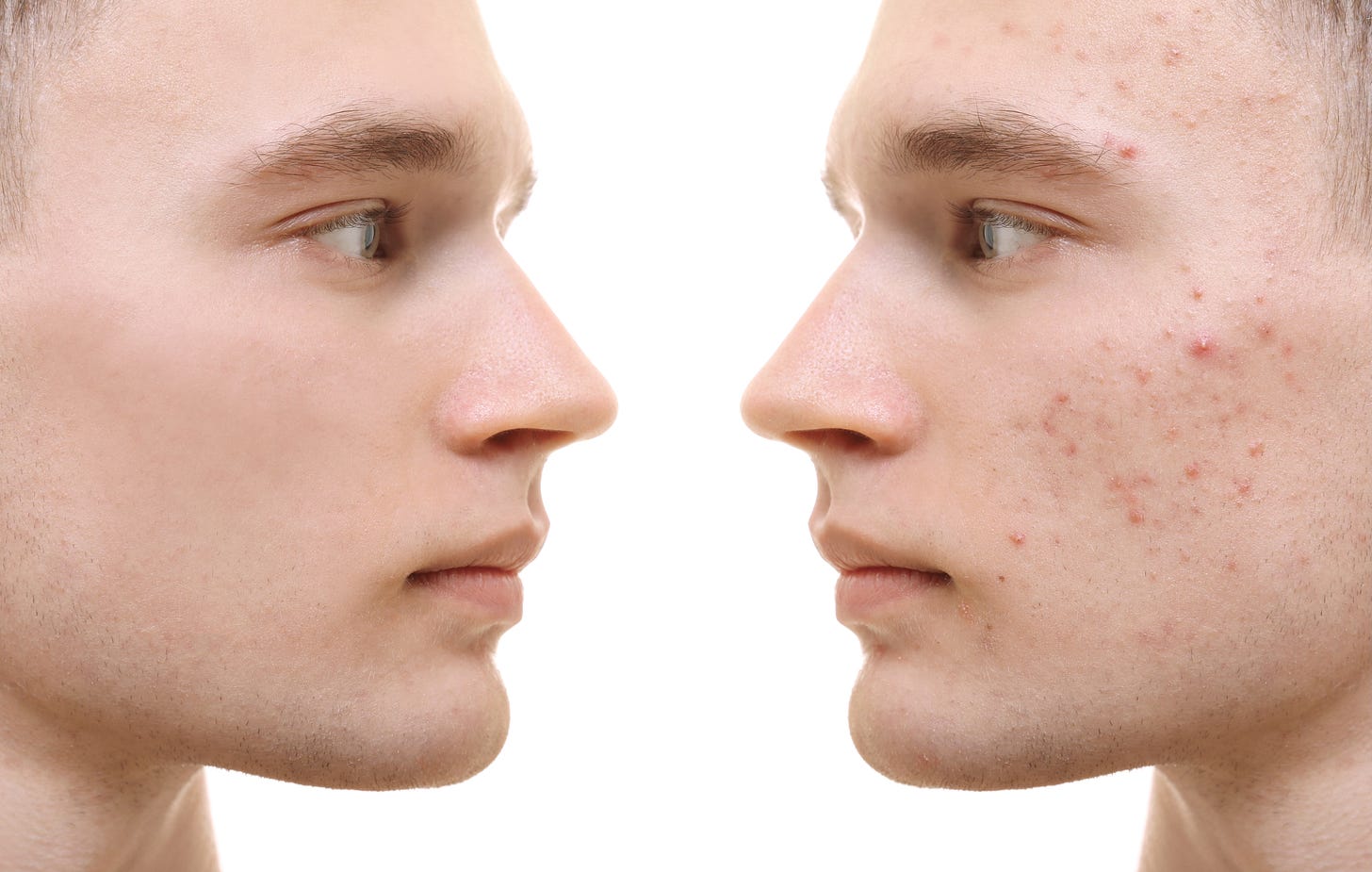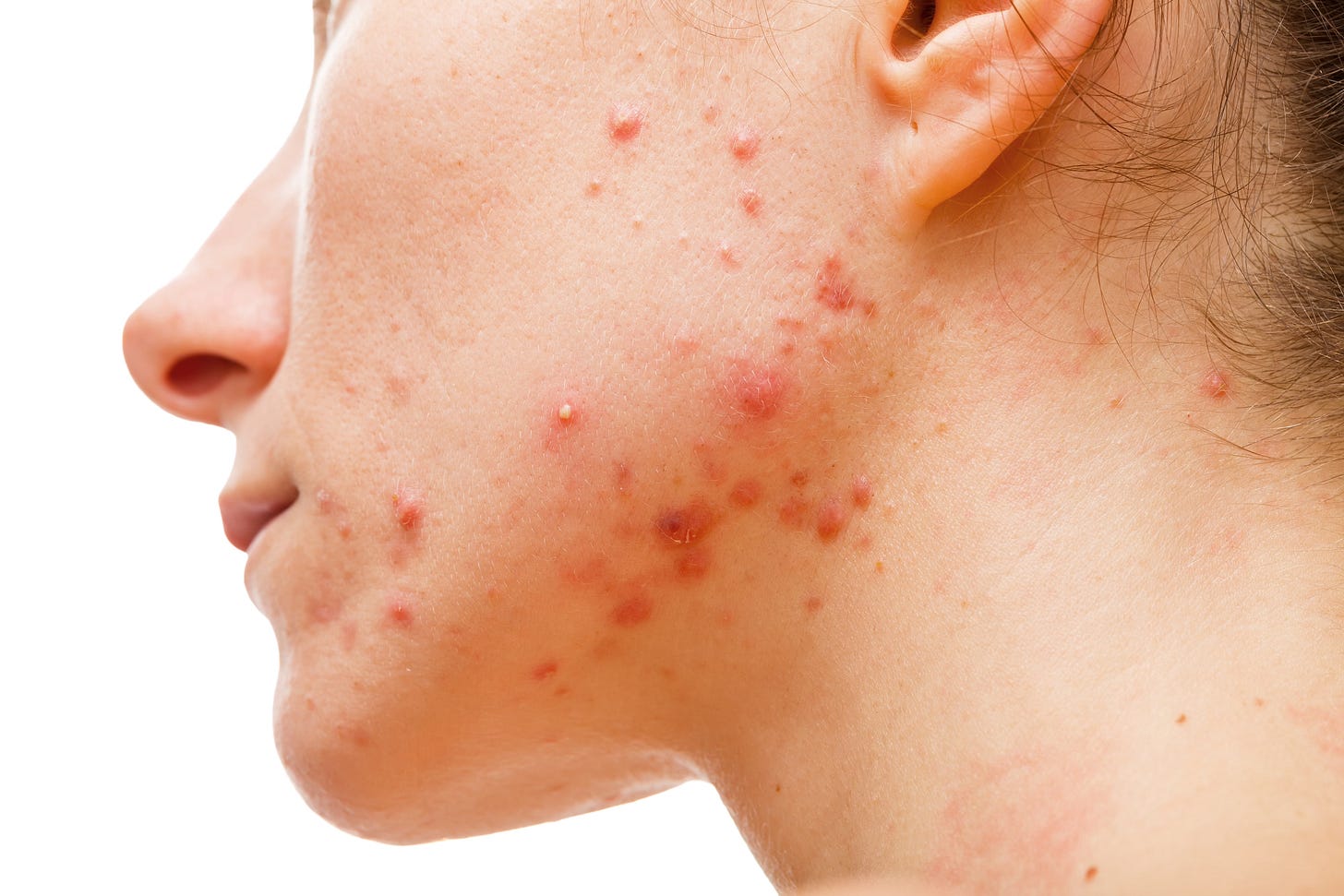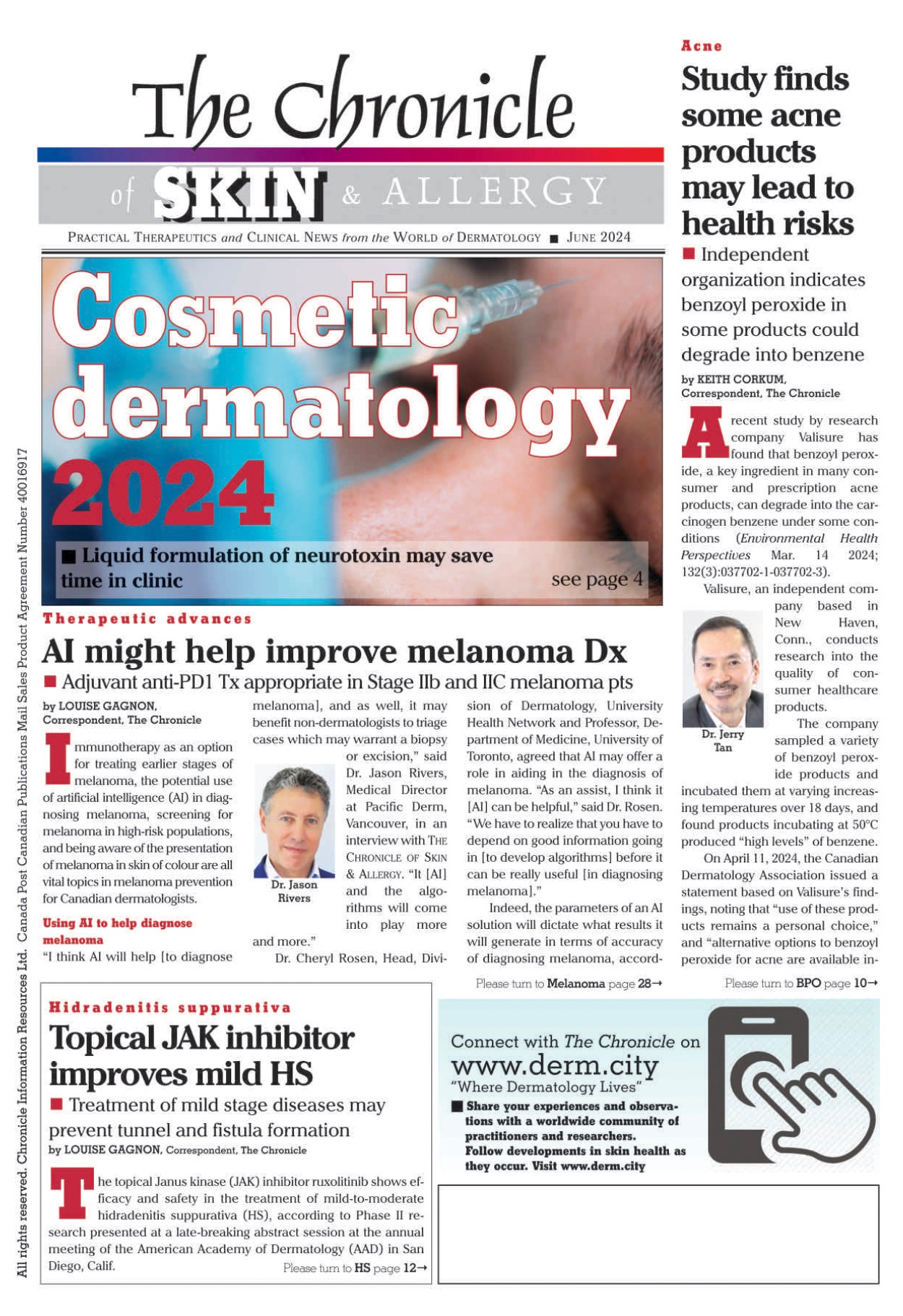Cumulative isotretinoin dose most impacts risk of acne relapse, isotretinoin retrial
Today's report also covers fractional lasers, real-world evidence of trifarotene, microbotox, and more (1,500 words, 6 minutes, 30 seconds)
The Focus on Acne e-newsletter is supported by an unrestricted grant from Sun Pharma Canada
Good morning, and welcome to the thirteenth issue of Focus on Acne, presented by Skin Spectrum Weekly. This series provides up-to-date information on developing therapies and trends in acne treatment. We appreciate your feedback and suggestions and invite you to be in touch. Please write to us at health@chronicle.org
Cumulative isotretinoin dose most impacts risk of acne relapse, isotretinoin retrial
Higher cumulative isotretinoin dosage may potentially reduce risk of acne relapse and isotretinoin retrial. As well, daily dosing does not appear to be associated with decreased risk of acne relapse or isotretinoin retrial for conventional and high cumulative dosage.
These findings were published online ahead of print in JAMA Dermatology (Jan. 15, 2025).
Researchers assessed rates of acne relapse and isotretinoin retrial and identified associated factors among patients with acne who received an isotretinoin treatment course.
The investigators used data from the MarketScan commercial claims database from Jan. 1, 2017, to Dec. 31, 2020, to identify patients with acne who were 12 years or older and had received isotretinoin for four months or longer, with at least one year of continuous enrollment after completion of isotretinoin.
The authors included a total of 19,907 patients (mean [SD] age, 20.6 [7.8] years; 10,504 females [52.8%]). Of those, 4,482 (22.5%) had acne relapse and 1,639 (8.2%) had isotretinoin retrial. Investigators found female sex (hazard ratio [HR], 1.43; 95% CI, 1.35-1.52) was significantly associated with increased rates of acne relapse, and isotretinoin cumulative dosage (mg/kg) was associated with a decreased rate of acne relapse (HR, 0.996; 95% CI, 0.995-0.997).
Daily dose was not associated with decreased risk of acne relapse or isotretinoin retrial among those with conventional and high cumulative dosages. Female sex (HR, 0.68; 95% CI, 0.62-0.76) and isotretinoin cumulative dosage (HR, 0.99; 95% CI, 0.98-0.99) were associated with decreased rates of isotretinoin retrial.
When investigators stratified the data by cumulative dosage, they found higher cumulative dosage was associated with decreased rates of retrial among patients with low (<120 mg/kg) and conventional (120-220 mg/kg), but not high (>220 mg/kg) cumulative dosage. Maximum daily dose (mg/kg/d) was not negatively associated with acne relapse or isotretinoin retrial in patients with cumulative dosage of 120 mg/kg or more.
Fractional RF effective for revising old acne scars in all skin types
Radiofrequency (RF) microneedling is an effective tool for tightening skin and filling in older atrophic acne scares when used in conjunction with other techniques. The technology is very effective and very safe for treating all skin types with acne and acne scars, researchers report in Aesthetic Surgery Journal (Jan. 16, 2025; 45(Supplement_1):S23-S31).
In this retrospective review, the authors discuss and share their experiences utilizing fractional RF in the treatment of both active acne and acne scars. They also outline outcomes in their clinic from three different modalities in the treatment of both active acne and acne scars.
In total, 356 patients received acne scar treatments. The cohort included a high-dose isotretinoin topical therapy series (n=128, 36%), a six-session ablative laser series (n=89, 25%), and a three-session fractional RF microneedling series (n=139, 44).
Of the patients with extended three-year follow-up, the relapse rates were: isotretinoin group, 36 of 54 (67%); laser group, 12 of 16 (75%), and fractional RF microneedling group, seven of 29 (24%).
In their conclusions, the authors note that fractional RF microneedling offers the advantage of effectively treating both active acne lesions and the associated early scars, and results in long-term remission. They note that this treatment has proven to be extremely safe in darker-skinned patients, whereas other acne scar revision modalities have many limitations in these populations. In addition, applications of fractional RF microneedling can be very effectively expanded to include treatment of old scars.

Italian dermatologists detail real-world approach to acne Tx with trifarotene
The clinical experience of dermatologists in Italy confirms trifarotene as an important addition to the armamentarium of antiacne topical therapies. Findings from a clinical programme (Dermatology and Therapy Jan. 9, 2025, published in open access online ahead of print) show that can be used alone or in association with other treatments in multiple clinical settings, and that this medication is most valuable in patients with existing scars or predisposed to scarring and acne-induced macular hyperpigmentation (AIH), and as a long-term treatment for maintaining remission.
The authors note trifarotene, the only retinoid with RAR-γ selectivity available so far, has proven to be effective and well tolerated in treating facial and truncal acne and in preventing and reducing acne sequelae when used in patients with active acne. They write the perceived benefits of trifarotene treatment and its favourable tolerability profile were also apparent in patient-reported outcomes.
In the article the authors provide place-in-therapy suggestions based on the experience of the Italian Acne Board with trifarotene in real-life practice. Trifarotene can be used successfully, as monotherapy or in association with other treatments, in most clinical settings of acne, but it plays an essential role in patients with existing acne-induced scars and AIH, those with a clinical or personal history of scarring and those who are predisposed to AIH. Owing to its long-term efficacy and tolerability, they write trifarotene is also a good option as a maintenance treatment. As with other topical retinoids, patients undergoing trifarotene therapy should be given advice on how to minimise local irritation when starting treatment.

Microbotox promising as acne Tx
Intradermal injections of diluted botulinum toxin A (BTX-A, microbotox) presents a promising approach to managing oily skin and acne vulgaris. The multifaceted actions of BTX-A offer promising avenues for addressing the complex pathophysiology of this inflammatory condition pending verification by larger controlled multicenter studies.
This is the conclusion of a paper published in Archives of Dermatological Research (Jan. 18, 2025; 317(1):283).
To assess the effect of BTX-A in the treatment of mild to moderate acne vulgaris, researchers included 30 patients with mild to moderate acne vulgaris treated with intradermal injections of microbotox on the cheek in a regular grid pattern using very small droplets. The investigators assessed cases by acne grading of severity using Investigator's Global Assessment of acne (IGAs) at baseline, at one month, and after four months of follow-up. IGA of acne at baseline ranged between 2 to 3 with a mean of 2.77±0.430 and decreased significantly to 0.93±0.868 after four months. There were highly statistically significant differences between different follow-up periods according to IGA. Six patients (20.0%) had fair improvement, 11 (36.7%) had good improvement and nine (30.0%) demonstrated excellent improvement.

Subscribe to The Chronicle of Skin & Allergy
Established in 1995, The Chronicle of Skin & Allergy is a scientific newspaper providing news and information on practical therapeutics and clinical progress in dermatologic medicine.
To apply for a complimentary* subscription, please email health@chronicle.org with your contact information or click the link below.
If you find the contents of this newsletter interesting, please check out the Yadav on Acne podcast. It’s available at Apple iTunes, Stitcher, Spotify, or wherever you get your podcasts.







